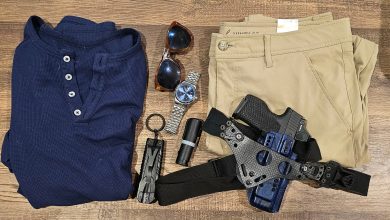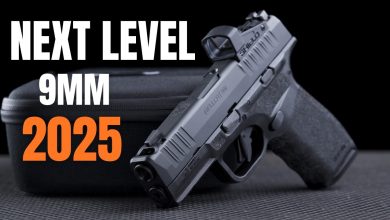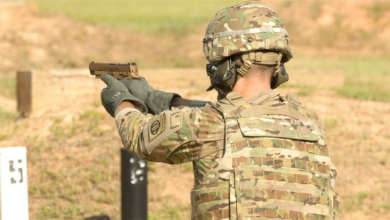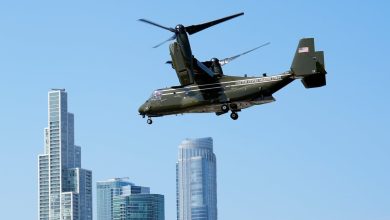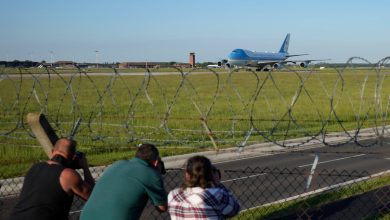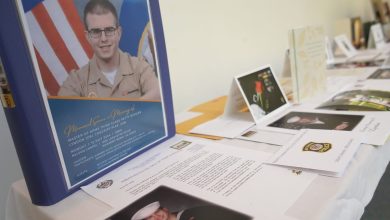Practicing With Small Handguns
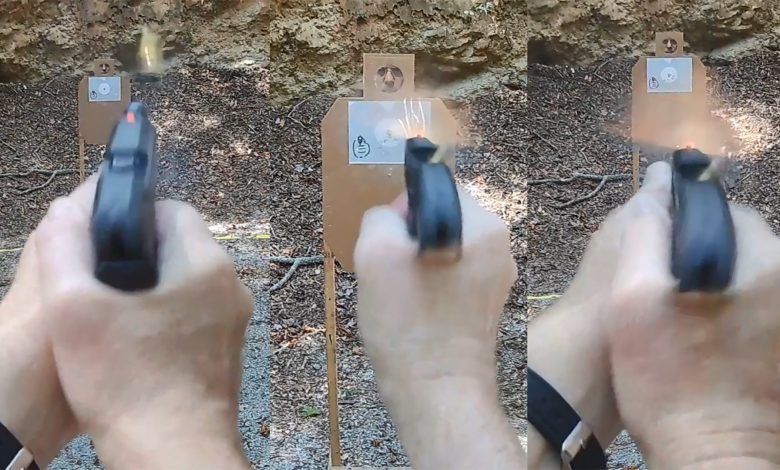
The qualification course set by the San Diego Sheriff’s office for obtaining a concealed carry license is an excellent course for practicing with a small carry gun such as a Ruger LCP or Smith & Wesson 642. It consists of 15 rounds fired from 7, 5, and 3 yards, in that order. Five rounds are required at each distance, At 7 and 5 yards, it is shot two handed. For the 3-yard stage, 3 rounds are shot with the primary hand and 2 rounds are shot with the support hand. Of the 15 rounds, 13 must hit the silhouette target to qualify.
The live fire training requirement to obtain the license is well structured. For an initial applicant, 100 rounds are required. Of the 100 rounds, 70 are for marksmanship practice. The qualification course is then fired once for familiarization and once for record. For renewal applicants, only 20 rounds of marksmanship practice is required, followed by shooting the qualification for familiarization and then again for record. This is a program that is a recipe for success at qualification.
The Ruger LCP revolutionized the pocket pistol market.
To use this format as a practice regimen with a small handgun, we can use the 50-round program. The NRA Marksmanship Qualification Program Defensive Pistol I course at the Pro-Marksman level consists of 20 rounds. It uses a more demanding standard of 100 percent hits on a 12-inch circle at 7 yards. The specified target is the NRA D-1 but any substitute 12-inch circle will do for practice, even one drawn around a pizza pan from a local store. Another substitute is two sheets of paper overlapped on each other, one portrait and one landscape. The overlapped two pieces will give an octagon 11 inches across.
Just like the San Diego qualification course, Defensive Pistol I is shot in strings of five shots. For our practice purposes, we can discard the 30-second time limit and loading requirement for the strings. Doing so allows us to use two different techniques to develop our marksmanship skills.
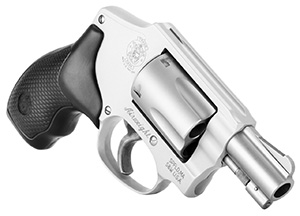
The Smith & Wesson 642 is an iconic snub-nosed revolver
With a revolver, our trigger-manipulation practice is enhanced if after firing a shot, we open the cylinder, rotate it randomly, and then close it without looking at the round placement. As the rounds become fired, we will encounter fired cases as we press the trigger. By watching the sights carefully as we press the trigger, any jerking of the trigger will be obvious. Four strings of five shots each will probably yield as many dry snaps as live shots. These dry snaps are where we learn to press the trigger smoothly.
The Ruger LCP is set up perfectly for what is called ‘skip loading’ because it does not lock back after the last round is fired. To do skip loading, load a round into the pistol’s chamber and then remove the magazine. With the original LCP, an empty magazine can be loaded to retain the feel of the finger extension. With other semi-autos, leave the magazine out. When the pistol fires, the slide will not lock back. Aim at the target and press the trigger again. This time, the pistol will dry snap but not fire. Just as with the revolver, watch the sights carefully during the dry snap. If the sights dip off the target, it is the result of trigger jerking. With skip loading, 20 rounds of live fire will also result in 20 dry snaps. Dry snaps help us improve our marksmanship skills.
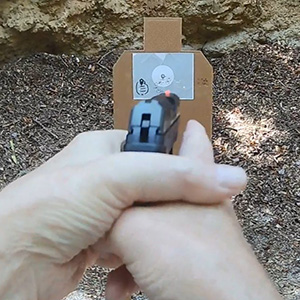
Don’t neglect practicing with your support hand
After shooting 20 rounds of marksmanship practice, shoot the 15-round qualification course. For seasoned shooters who find the course less demanding, the target can be downsized to a sheet of paper in landscape mode on a silhouette. Less experienced shooters can simply use a silhouette as their target.
Start at 7 yards. From low ready, fire five shots and mark them. Place the target at 5 yards, fire five shots from low ready, and mark them. Finally, place the target at 3 yards and fire three shots with the primary hand from low ready. Then place the pistol in the support hand and fire two shots from low ready.
For the second run of the qualification course, we can up the game. Where permissible by the facility, include a dry (no ammo) draw and snap at the beginning of each distance’s shooting. Then load the pistol and shoot from low ready. Otherwise, simply begin from low ready. To really measure your shooting, instead of shooting the 7- and 5-yard distances as five-shot strings, shoot each as a series of one-shot presentations, shooting five times total. At 3 yards, shoot with the primary hand as a three-shot string. After the primary hand string, aim at the target with both hands. Then transfer the pistol to the support hand only and fire a two-shot string.
The reason for aiming with both hands and then transferring to the support hand is to simulate being wounded in the primary hand during a two-way encounter. There are two likely possibilities after being shot in the primary hand while shooting with both hands. The first is that the pistol will be dropped, and you will have to retrieve it from the ground. The second is that the primary hand fingers won’t work correctly because of tendon damage and the pistol will have to be transferred to the support hand to continue shooting.
While small carry handguns can be punishing to shoot, usually after a few sessions, a shooter will be able to fire 50 rounds without difficulty. Structuring your practice around necessary skills and likely scenarios will give you confidence in your ability to defend yourself beyond “arm’s length.”
Read the full article here


